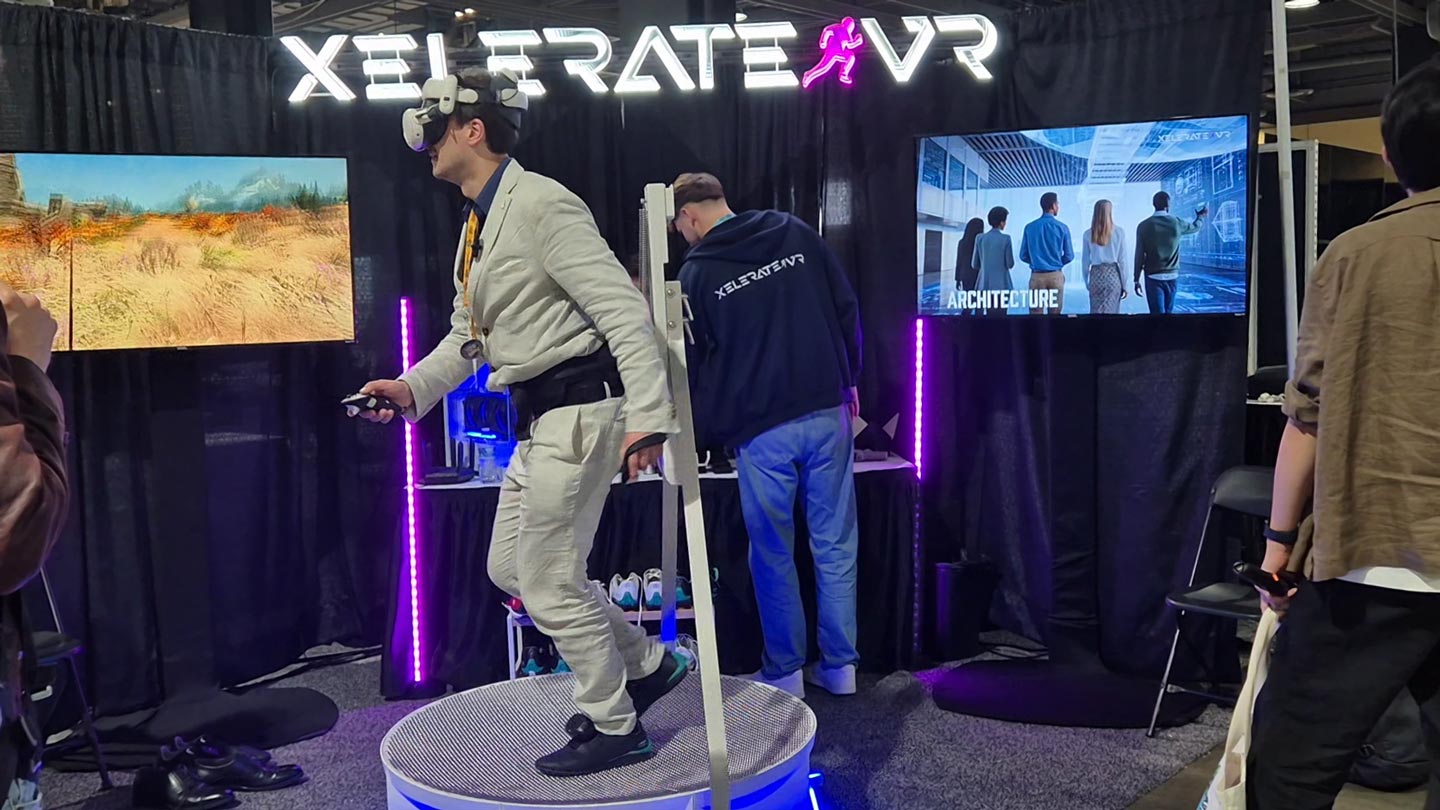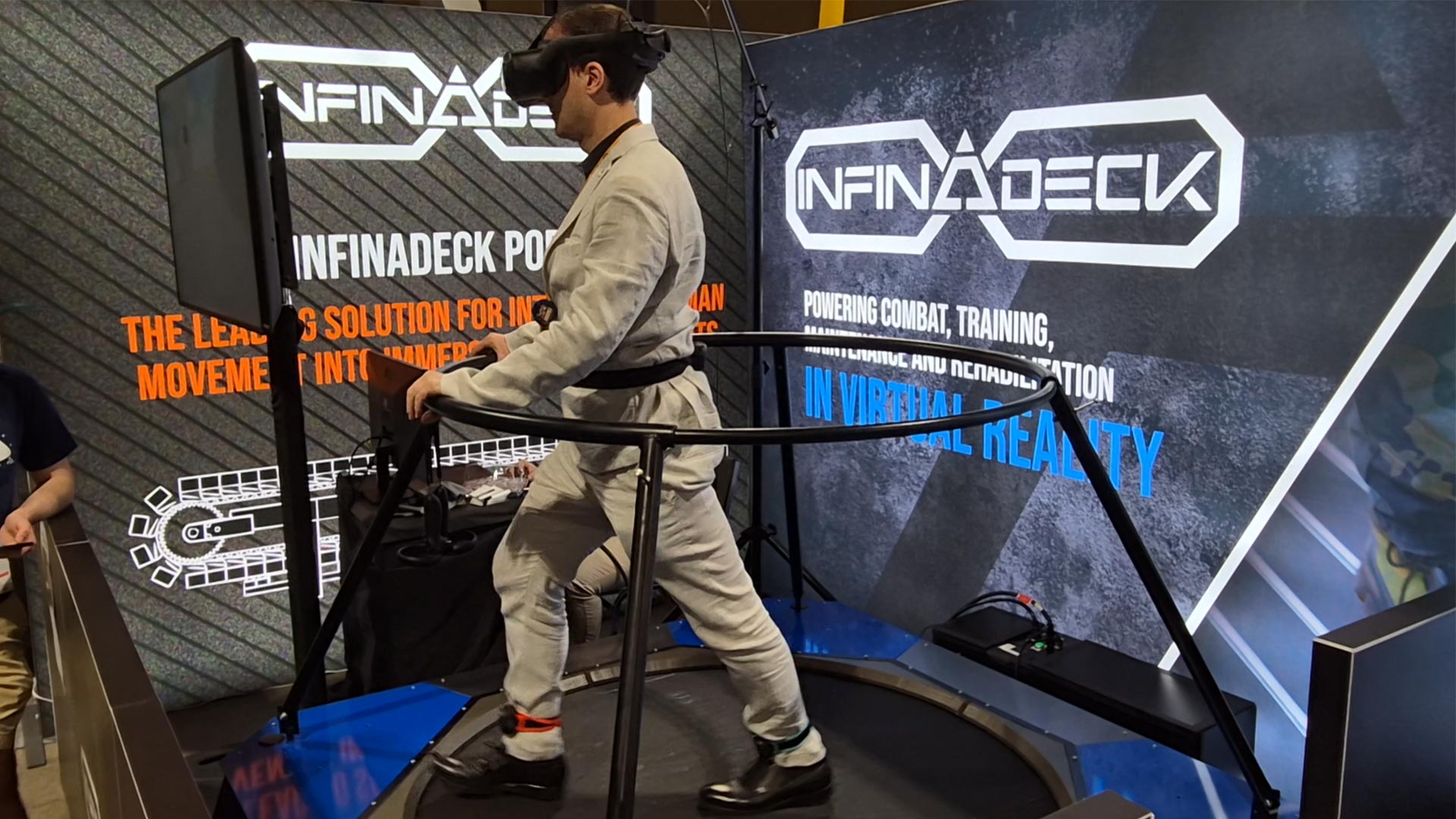HTC launches Vive Flow headset for $499
Today HTC has unveiled its latest product, Vive Flow, a lightweight headset aimed at consumers. Let’s discover everything about it!
Specifications
Chipset: Unannounced model, inferior to Snapdragon XR2
Display Type: LCD
Display resolution: 3.2K
Framerate: 75Hz
FOV: 100 degrees
Weight: 189g
Audio: integrated speakers and microphone; support for Bluetooth headphones
Connectivity: Wi-Fi, Bluetooth, USB-C
Vive Flow description
HTC is coming back to consumers after having already released this year two headsets devoted to prosumers and professionals: HTC Vive Pro 2 and Vive Focus 3. This means that is not abandoning this market as we all imagined, especially after the previous CEO Yves Maitre seemed to steer completely the attention of the company towards enterprise.
The new headset, with which HTC hopes to conquer the consumer market, is called Vive Flow, and it doesn’t try to compete directly with the Quest, but tries to offer something different.
First of all, the form factor is not similar to the one of the most popular standalone headsets on the market: Flow is very compact, and looks like a pair of very big sunglasses. It looks a bit like Huawei VR glasses, and it shares some features in common with them. Vive Flow is lightweight, and its frames can be folded like the ones of standard glasses: this way it can fit inside their elegant thermos-shaped case and be carried wherever you want in full agility.

Apart from being light, the glasses have also been studied for comfort, with frames that can be enlarged to fit the shape of your head. There are also magnetic face gaskets made in fabric with different dimensions (narrow/wide), so everyone can find a perfect fit for his/her face. Every lens features a diopter adjustment dial (like on Huawei glasses), that can correct your eye impairments without you having to wear glasses or prescription lenses while using this headset. A fan should blow away warm air from your face so that you can enjoy VR without sweating. The attention to comfort is high on Vive Flow, at least on paper (we are waiting to read reviews on the official units).
The glasses can be this small because they feature pancake optics that allow the screen and the lenses to be closer than in the usual Fresnel lenses scenario. This is amazing, but usually, this design introduces some issues, like a lower field of view. HTC claims anyway a good FOV of 100°. The 3.2K display paired with the not-wide FOV should give a good pixel density, so the visuals in the headset should be good.
The device is a standalone headset powered by a chip that is not powerful as the XR2 installed in Vive Focus 3, but should give a decent horsepower. As I’ve said, HTC is not trying to compete with Quest, and as we’ll see later on, heavy gaming is not the main use case of this headset, so an older generation chipset may have sense here. This is also a safer bet to dissipate heat in such a small form factor so that the headset doesn’t become hot on the face of the user.

Two front cameras guarantee 6DOF tracking of the device, while the controller, that is the phone of the user connected via Bluetooth, works as a 3DOF pointer. A leak from Protocol talked about the possibility of using your hands as the controllers of the device, but there is no reference to it in the official material. It would make sense to implement it, though, since hands would offer natural 6DOF interactions, that are much better than a remote in VR.
Vive Flow features no internal battery and it works by being connected to whatever power source that has a USB-C plug (your phone, your PC, a power adapter, a power bank) that you can attach to the USB-C port that comes out from the frames of the glasses.
The design of the headset is nice, with a very cool reflective finish on the front. Its problem is that wearing it, people immediately look like flies.

Use cases
Since the Oculus Quest 2 is unbeatable as a VR gaming machine at the moment (it is too cheap and has a too big gaming catalog), HTC has decided to aim the headset for other usages, and in particular:
- Relaxation/meditation
- Productivity
- Media consumption
- Light entertainment
The first use case, the one about meditation, is repeated a gazillion times in the press release: “VIVE Flow is intended to help people nurture their minds, relax and have fun on a daily basis, and go with the flow”; “it’s easy to find time for meditation, entertainment, or productivity with VIVE Flow thanks to its lifestyle-minded features”; “VIVE Flow represents the next evolution of technology, as we take a more holistic view of how we can make life better”. Whatever all these things mean, reading the press release, I had the impression of reading some new-age magazine more than the announcement of the launch of a new headset.
The company insists a lot on the relaxation use case and believes that it is the killer app for this device. I wonder if the meditation experiments by Enea Le Fons during 30 Days in VR have been of inspiration for it. All forms of meditation (mindfulness, ASMR, soothing music) are a hot topic, and there are countless Youtube videos about it, with millions of views (who doesn’t know the LoFi Girl?). I myself have used VR meditation experiences, and I think that it is an interesting use case because in VR you can not only feel immersed in the relaxing environment, but you can also keep doing basic interactions that keep you concentrated in the “here and now” (hic et nunc) that prevents your brain from getting stressed by overthinking. Many launch titles will be focused on this theme, and one of them will be TRIPP, that is one of the most popular VR meditation experiences. Another one is the relaxing indie game Space Slurpies. And then there is something new that we of VRrOOm are cooking up… 😉

Together with meditation, HTC is also focusing on productivity, mostly connected to meeting in VR through Vive Sync, Vive’s flagship VR meeting application. A device like Vive Flow can be easily carried anywhere and can be worn very fast, so it is ideal for having meetings from wherever you are.

Media consumption is another important use case, and we have recently seen that also Nreal has launched a headset completely devoted to it because in certain Asian markets, this is the most common usage of XR headsets. We all know that in VR we can have a very wide screen where to watch video content, and Vive Flow can be ideal for it: you could lie on a bed with your comfortable Vive Flow on, and watch a movie on a giant screen in front of you. The ability to connect your phone and stream content from there is also amazing to exploit existing services like Netflix, and maybe watch the latest episodes of Squid Game on a giant virtual display.
But let’s be honest HTC, the real use case of these glasses is the one you are not telling us. You say elegant sentences like “holistic view of we can make life better”… “lifestyle-minded features”… but these are all big words just to hide the fact that this lightweight device is meant to watch porn. And in fact that the cylindrical carrying case is worryingly similar to the Kiiro Titan sex toy…

Content
Vive Flow works with the Viveport store, like all other Vive headsets. It is possible to have the usual monthly subscription to enjoy all the Viveport content that you want for a fixed price, but since Flow can only run content compatible with a single 3DOF controller, HTC is offering for it a lighter plan costing only USD $5.99 per month. The company is aiming at having 100+ available pieces of content for the launch in November.
Another possibility to enjoy content is connecting your phone to your headset via Miracast (if you have a compatible phone) and see the screen of your phone in VR, so you can see all your favorite content that you usually watch on your phone (e.g. Netflix) on a big VR screen.

Price and availability
Let me copy past the press-release regarding price and availability:
VIVE Flow retails for USD $499 / £499 / and starting from 549€. It will be available via https://www.vive.com/vive-flow, as well as retailers around the world. Pre-orders start on Oct 14 globally, and anyone pre-ordering will receive the official VIVE Flow carry case and a gift bundle of 7 pieces of content. Open sales begin in November 2021.
VIVE Flow carry case is also available for purchase, giving you peace of mind no matter where you go. A small but powerful 10,000mAh VIVE power bank can be purchased separately, providing extra battery life for long days.
Personal comment

I have mixed feelings about the Vive Flow.
Let’s start with the bad things. This is a 6DOF + 3DOF headset like Vive Focus, and we have already experimented that 3DOF interactions feel very limiting in VR. There are some use cases where even a 3DOF headset is ok (e.g. 360 videos for training, or watching movies for entertainment), but virtual reality gives its best when you can really use your hands to do something. I really hope that the rumors about hand tracking are true because I think this headset desperately needs it.
Then the other problem is the price: this lightweight device costs $500 when for $300 I can buy a Quest 2 that has far more features, more horsepower, and more content. And on Quest 2 there are also already plenty of relaxation applications (TRIPP, Guided Meditation, etc…), meeting applications, and porn apps. So the Quest outperforms this device on many sides, and is a tricky competitor for it, especially in the consumer market where people may give a lot of attention to price and available games.

On the other side, I appreciate that HTC is the first VR brand, after Huawei, launching a compact lightweight headset. Pico teased it at CES, but never transformed it into a product, and so did others (Panasonic, I am looking at you). Facebook has teased something yesterday, but it was just a marketing stunt. HTC is instead finally launching a VR headset that doesn’t look like a shoebox in the face of the user but looks like bulky sunglasses. It’s a big step forward for comfort and design. I personally appreciate that HTC is going to try to launch a new category of products on the market, instead of just creating another Quest 2 clone.
Regarding the competition with the Quest, it may be argued if it is a fair comparison or it is like comparing apples and pears. Quest 2 is an all-in-one headset, heavily focused on gaming (and fitness), while Vive Flow is a lightweight viewer focused on media consumption and relaxation. Quest 2 is uncomfortable and bulky, Flow is comfortable and compact. Quest 2 allows for complex interactions inside VR content, Flow is just for basic interactions. These look like two different categories of products, for two different audiences. I think that on one side this argument is true because the user personas are different, but on the other side, some use cases may be identical (I can have a session in TRIPP both inside the Quest and Vive Flow). I think that the exact business definition is “indirect competitors”.
HTC highlights the difference in the target market when talking about the Flow, underlining how the comfort may make a difference for certain categories of users. The possibility of adjusting the optical parameters of the lenses that frees everyone from using glasses when in VR, the compact form factor, and the low weight are important features of this headset, and according to some studies conducted by the company, they can be important to attract categories of users different from adult males to VR.

The price is not cheap, but let’s also remember that Facebook has distorted our vision of prices in virtual reality with its undercost headsets subsidized by Facebook’s data business. When Huawei launched its 3DOF glasses similar to these ones, the price was close to the one announced today. Not all companies can sell undercost, and HTC has always sold at a premium price.
As always, the content will be the king that will decide the success of this headset. Relaxation is an enormous market, but will HTC be able to gather enough content for this purpose? Will it be able to convince people fond of meditation to buy a VR headset to perform it? Will it be able to convey the added value that it believes the Flow has over the Quest 2 to perform meditation? Will it be able to justify the $500 price tag? Will it be able to attract people different from the male gamer to VR? The answers to these questions are what will decide the fate of the Flow. We will all discover them together in the upcoming months. Good luck HTC in going with your flow.
(Header image by HTC)
Disclaimer: this blog contains advertisement and affiliate links to sustain itself. If you click on an affiliate link, I'll be very happy because I'll earn a small commission on your purchase. You can find my boring full disclosure here.



